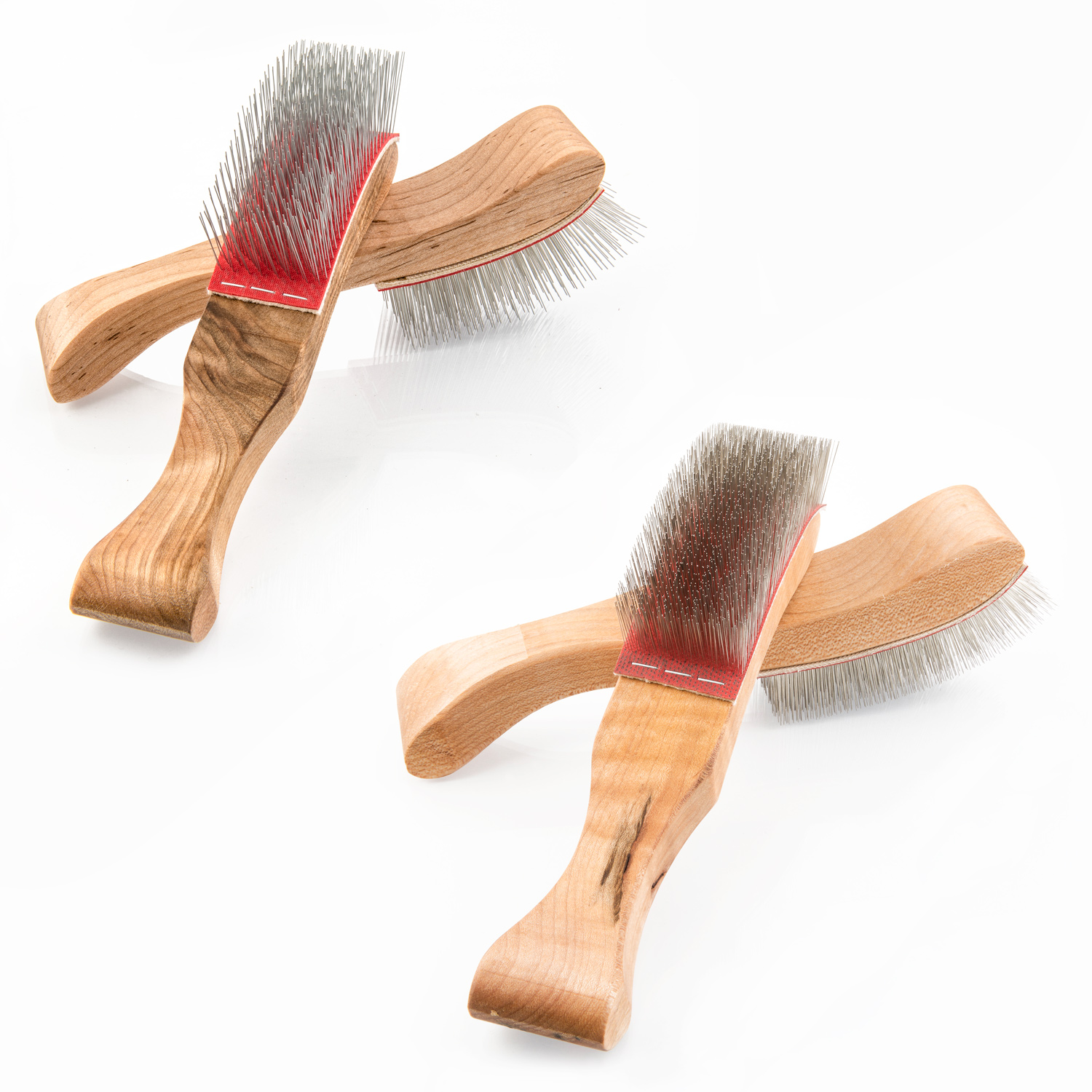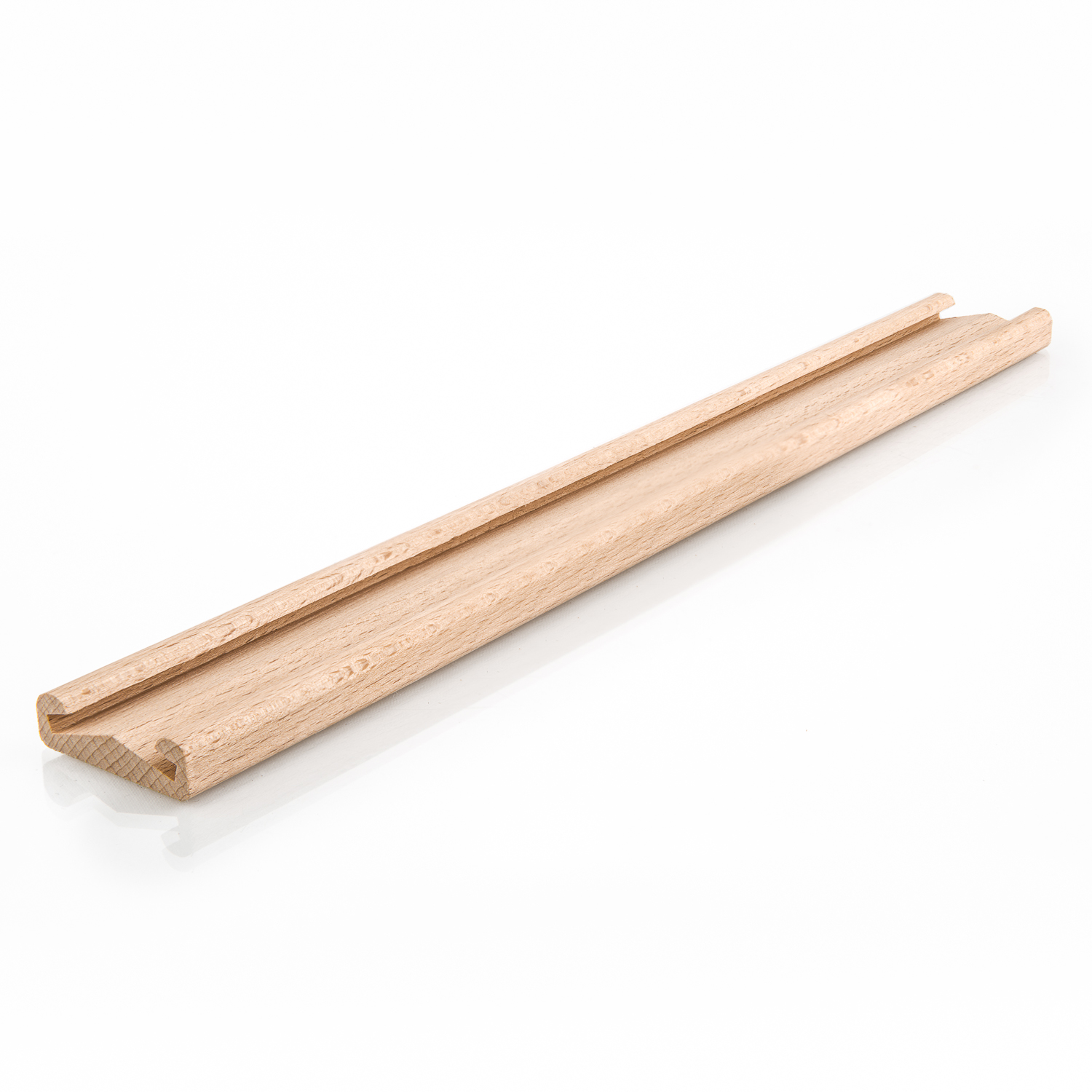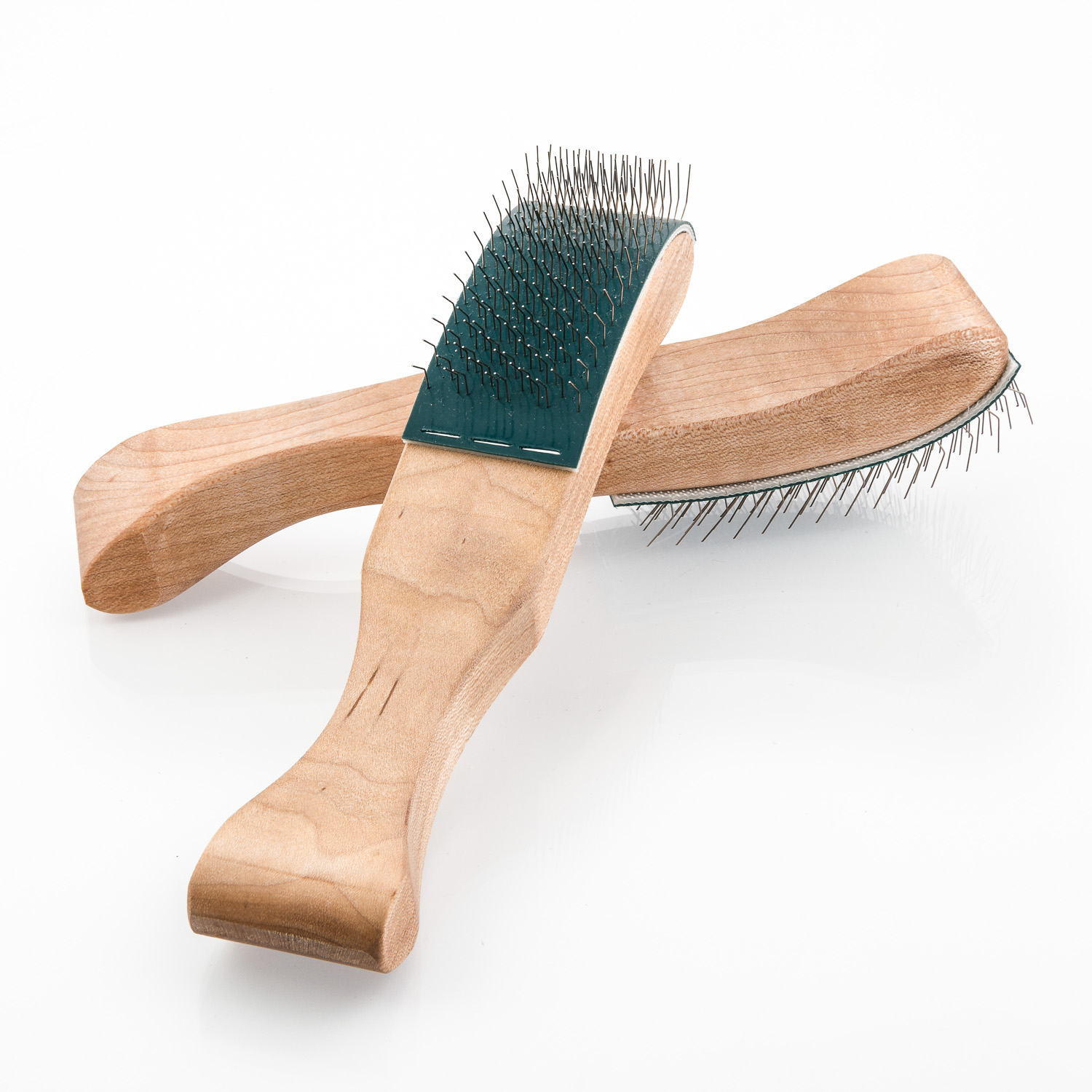
PRODUCT INFORMATION ALERT
• This product has sharp pointed wires • Extreme care must be taken in its use •
• Improper use may cause serious injury •
• This product is not designed to be motorized and used under power •
BEFORE WE BEGIN
Spinners have always been impatient with carding and fiber preparation. In days past, children were often given this job. Or if a spinner lived near a mill and could afford its services, she would have the carding done there. Likewise, many of today’s spinners bypass carding almost entirely, by spinning mostly roving or sliver – two mill preparations originally devised for mechanical spinning.
When spinners rely on drum carders in an attempt to streamline fiber preparation, it is important that they learn how to use these tools well. Certain basic methods and techniques can greatly increase the efficiency and effectiveness of a drum carder – while others waste time and increase the amount of work.
INSTRUCTIONS ON USING A DRUM CARDER
As with hand cards, the first carding round is a preparatory step, let the equipment do the teasing. Because the main objects of teasing are to prevent damage to the fiber and the card clothing, to promote a smoother end product, and to make carding easier, here’s how to tease without working yourself into a lather.
Instead of feeding unteased fibers through the feeding chute – where jams often occur – lay them directly onto the main drum from the top, where you can see what is happening at every moment. Grasp a small handful of fiber or a couple of goodsized locks. Hold them firmly, and allow a few fibers to begin catching in the teeth as you turn the drum. Let the fibers be pulled gradually from your hand, being careful to keep your knuckles away from the teeth. (The fibers will not feed in gradually if the wool has been abused in washing, and has become tangled or felted so that it is hard to pull apart.) It’s all right if a small cluster escapes your hand, but if a large one gets away, stop the machine, back it up (if necessary), and redistribute the fibers. After a few of these episodes, you will learn how large a fiber cluster your carder can handle. When the drum is full, it is unable to process additional fiber.
How much is too much? Each type of carder can efficiently handle a different amount of fiber. The capacity depends on the drum size and the length of the teeth. However, you can see when loaded clothing is reaching its capacity. You need enough tooth exposure to pick and and comb incoming fibers. You can also feel and hear when the clothing becomes too full: the handle will turn with difficulty, even though no new fiber is being added, and you’ll hear a muffled, rubbing sound.
Taking the fiber off the card clothing is called doffing. Often a doffing rod, or similar device, is used to left the fiber away from the drum. Most carder manufacturers provide a doffer, but an old, long, steel knitting needle, an old ice pick, or a painted steel rod will do nicely. (Aluminum knitting needles are not strong enough.) Be sure that your doffer is not so sharp that it damages the backing of the card clothing. The doffing of wool, which is a typical long fiber and gives as much difficulty as any substance you will encounter (after wool, cotton is a breeze.)
First, turn the loaded drum so that the seam of the card clothing is exposed. This is where the two ends meet and are tacked down, and you’ll most likely find a row or two of teeth missing at this point. You might think that you can slide the doffer under the batt and lift up one end. If this is cotton or short wool, you can – but any long fiber will present a dense mat which will not come apart without a struggle. Start at the far edge and slide the doffer under an inch or two (2.5 – 5cm) of the batt. Lift this, allowing the fibers to slide apart. Although you may need to pull very hard, don’t tear the fibers. If you think damage is imminent, try a smaller amount.
Then work your way across the drum until you have opened the entire batt. Now one end of the batt is free, but the rest is still caught in the teeth. If you pull up gently on the loose end while turning the drum backward, most of the fiber will lift away – but not all of it will. The closer you get to the end of the batt, the more fiber will remain in the teeth – often as much as half the thickness at the end. Use the rod to lift the batt away from the drum as you pull the free end of the batt up and back. Note that you can even do this if the teeth on your card clothing are arranged diagonally. To lift away the entire batt, use these motions but repeatedly slide the doffer under the batt about 4 or 5 inches (10 – 12.5 cm) ahead of where it is being lifted free. Lift with the rod, then pull on the loose end. Back up the drum and repeat. In a few moments the batt will lift entirely free of the teeth. A word on doffing mesh. Some people like this way of handling the task. The mesh is an open net that fits the card clothing – you can buy or make one. It is laid into the teeth and pushed all the way down before carding begins.
At unloading time, the fibers are loosened at the tail end of the mesh and the mesh is pulled up out of the teeth, bringing the fiber with it. However, I’d rather doff with a rod and not fiddle around so much. When both sides are firmly held, pull apart. The two halves will retain the original flat configuration. The idea is to separate each batt into thin sheets of fiber which you’ll feed back through the carder.
You are now ready to re-card, but don’t try to feed the entire batt into the carder at once. If you do, your carder will become overloaded, the carding will be incomplete, and the machine will jam. Finally, the poorly carded fiber will be difficult to spin smoothly. After the first carding, the texture of the batt will be uneven, but it will have two characteristics of completely carded batts: the layered arrangement and the lengthwise grain of overlapping fibers. You can use these characteristics to quickly prepare the fiber for the next step. At this point, some people pull a strip from the side of the batt and fluff it into a thin layer.
Again, I don’t like to spend this much time on the task. In the amount of time it takes to pull off and spread out one strip, you can probably prepare a whole batt with my method. place your hands on
You will now be feeding the fiber through the feeding chute, in the “normal” way. But don’t completely rule out the possibility of feeding from the top again – some fibers card better from the top, while some do better from the bottom (the chute). Try both techniques and see what you think. Remember to keep the layers thin, and take the time to pull apart any sections of the divided batt that seem to be too thick. A second invested here can make a big difference in how thoroughly your machine cards. Slide a narrow edge of the fiber layer under the licker-in until you feel the machine begin to draw it in.
Now you need to retard the fiber’s progress slightly, to keep it from being drawn in too rapidly. But don’t hold it back too firmly, or the fiber will wrap around the licker-in (the little, feeding drum) instead of being transferred to the swift (the big, carding drum). To get an idea of how much to hold the fiber back, just do it wrong a couple of times. Then you’ll know exactly what is required. Some people lay a hand lightly on top of the fiber layer in the chute, but I like to give each layer a series of quick, light tugs, which both slow the progress and thin out the layer being drawn in. Both methods work.
This job is even more bothersome than cleaning hand carders, because it takes longer and is more frustrating. Of course, you can leave bits of fluff embedded in the teeth, especially if you always process fibers of similar color and texture. But I advise against this, especially if you have been working on protein fibers-which attract wool moth larvae and carpet beetles. These pests can be transferred in turn to everything you run through the machine.
You might as well clean your carder, starting with the licker-in, because it’s hard to clean that part without transferring a bunch of stuff onto the swift. Remove the junk batt from the licker-in as you would a regular batt, while doing your best to keep the swift from taking it. Get most of the trash off, but don’t bother to get it all – you will have to clean this part again at least once. Now clear the swift of clumps or wisps of fiber by lifting them off with the doffer. There probably will not be enough residue to form a complete layer, but keep sliding the rod deep into the teeth so you can remove as much as possible. Keep pulling the fibers out of the teeth with your free hand – the third one, which is not turning the handle. Or you could use a flicker-like drum rake, sometimes supplied with the carder or available for separate purchase. If there is any noticeable amount of fiber in the teeth, however, the doffer is probably the fastest at this point.
Now look at the licker-in. What did I tell you? Ignore it for now, until the swift is cleaner. The rake works well at this point for combing through the teeth and lifting out stray bits of fiber. Always comb with the grain of the teeth, and go as deeply into them as you can. Pull the bits of fiber out of the rake as you retrieve them, so they don’t get redeposited.
When the swift is fairly clean, go back to the licker-in; then repeat your efforts on the swift, and so forth. A drum carder is a bed that never stays made, but eventually it will be quite clean. And the whole mop-up operation will take only three or four minutes in all.
If you want the card clothing really clean – for example, if you are changing colors – there is one more thing to do. Nothing is more frustrating than to go from black wool to white and then discover that the first batts have dark fibers mixed in. To prevent this, I use my secret weapon. As a standard accessory for your drum carder, get a strong, stiff, long-bristled hairbrush. It will pick up the last fibers that have resisted your previous efforts: keep brushing up and lifting out, working with the grain, and watch more fiber come away from the drum.
That should do it. But if you are, indeed, switching colors, check again in good light – it pays to be paranoid.
For speed and ease of spinning, I don’t think you can beat the little batt from hand cards. That’s why I like to hand card my drum-carded batts. However, because I see spinners struggling to spin drum-carded fibers, I want to offer some tips on minimizing the trouble. As in other fiber preparations (such as sliver and roving) where the fibers are laid out in a continuous, overlapping strip, it’s difficult to get the fibers in a drum-carded batt properly attenuated before they lock up.
There are several ways around this problem. Some spinners work with short pieces of roving or sliver folded over the ends of their index fingers, retaining and controlling the fiber supply with the rest of their fingers. This technique diminishes fiber overlap and makes spinning easier, because the fibers are pulled off the tip of the finger and enter the twist zone folded in half. You can use this method to spin drum-carded batts of medium to long fibers.
Pull a narrow strip from the side of the batt and divide in into 3 to 4 inch long segments (7.5 -10cm), depending on the length of the fibers. Fold a strip over the end of your index finger and hold onto its tail, just as you would a roving. You will have slightly less control than with the standard long draw, and your spinning will be slower, but this works reasonably well if the carding was very thorough.
You can also take these segments of a narrow strip and spin them from their ends. Draft off the side of the fiber segment and not straight off its end. This will keep a moderate amount of fibers feeding into the twist and will help prevent clumps from locking up the drafting zone. It’s possible to divide the fibers across the grain, instead of with it. Lay a hand or a ruler across the end of the batt, about 3 to 4 inches (7.5 – 10 cm) from one end (again depending on the fiber length). Carefully pull away a strip across the end grain. Divide this into two or three parts and you will have fiber groups that look like hand carded batts- not quite as good, but manageable. If you want to spin with a long draw, you can use either of these divisions – lengthwise or crosswise. As with roving or sliver, however, do not try to attenuate fibers from the middle of the fiber supply. Instead, tilt most of the fibers away from the twist zone and spin off the bottom or side of the mass. Because the fibers overlap, you will probably need to work father from the twist than you would with a hand-carded batt. And work with a small amount of fiber at first until you are familiar with how fibers interact in a batt. Especially with protein fibers, which have “smooth” and “rough” directions, you will find that each batt has a “grain” and that it spins more smoothly in one direction than another. If you keep all your segments aligned as you divide them from the batt, you will be able to work “with the grain” throughout your spinning.




